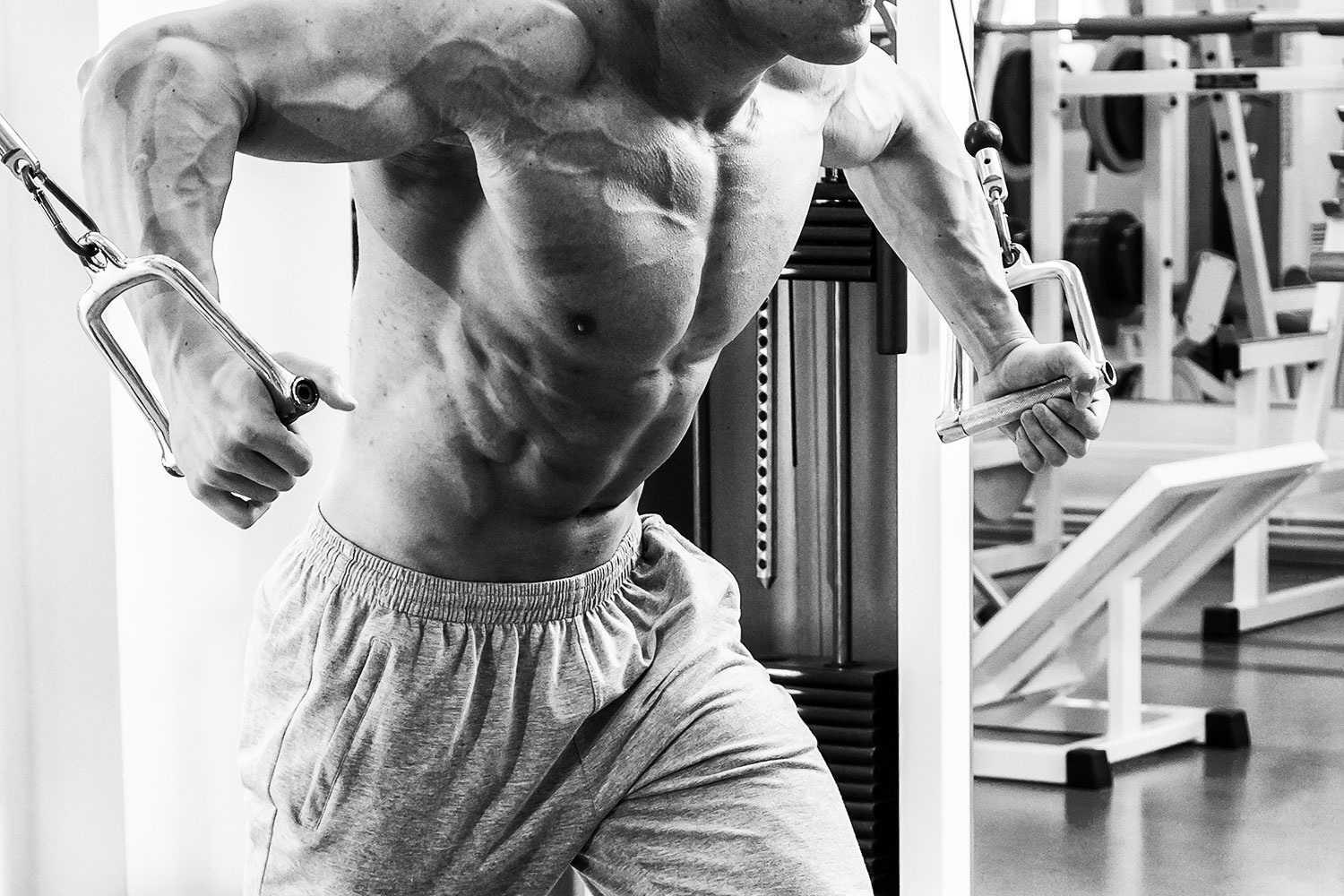Table of contents
Building up pectoral muscles is a common goal for many fitness beginners. Well-developed pecs can not only improve physical appearance, but also enhance upper body strength and stability.
However, it’s important to commit to an intelligent, balanced approach to achieve optimal results and avoid common mistakes. In this article, we’ll share five essential tips for beginners looking to build up their chest ! Read my best training for chest post now !

Photo : (c) Shutterstock
1. Understanding pectoral anatomy
To succeed in building up your pectoral muscles, it’s essential to develop a thorough understanding of the anatomy of this muscular region. The pectorals, mainly composed of the pectoralis major and pectoralis minor, play a crucial role in upper-body movements such as push-ups and arm movements.
The pectoralis major
The pectoralis major stands as the primary muscle of the pectoral region, and it is the muscle responsible for generating the broad, imposing appearance of the chest.
This broad and flat muscle covers a substantial portion of the chest area. Its primary function involves movements that draw the arms towards the center of the body, an action seen in exercises such as push-ups and bench presses. When thoughtfully developed, the pectoralis major has the potential to create a visually powerful and athletic aesthetic, which is highly sought after by many individuals dedicated to their fitness journey.
The pectoralis minor
Positioned beneath the pectoralis major, the pectoralis minor is attached to the ribs and plays a complementary yet significant role in shoulder stability. While it may be smaller in size compared to its counterpart, the pectoralis minor’s function extends beyond the aesthetics. It contributes to shoulder health and overall well-being by facilitating internal rotation of the shoulder joint.
Moreover, the pectoralis minor aids in maintaining proper posture and muscle balance in the chest and upper back region, which is crucial for overall upper-body strength and agility.
To effectively target the pectorals when training, it’s important to understand the specific movements that engage these muscles. Exercises such as push-ups, bench presses, splits and pullovers are particularly effective for working the pectorals, especially if you’re just starting out, gentlemen!
When performing these exercises, concentrate on the sensation of your pectoral muscles contracting. Visualize your muscles at work and make sure you use a full range of motion. Keep in mind that activating the pectorals requires conscious, controlled muscle contraction, avoiding overloading other muscle groups. With each repetition, don’t hesitate to contract your pecs for 1 to 3 seconds before releasing.
2. Best training technique for chest
Proper technique is fundamental to maximizing results and preventing injury. Concentrate on precise execution of exercises such as push-ups, bench presses and squats. Maintain good posture, control movements and use the full range of motion to effectively challenge the pectorals.
Respect the pause times between each set and take the time to execute each repetition correctly – going faster won’t help you build muscle faster, guys!
3. Vary your exercises
To stimulate muscle growth and avoid plateaus, it’s essential to vary your exercises. Explore different variations of exercises such as incline push-ups, pulley splits, dumbbell bench presses and so on. This will allow you to exercise your pectoral muscles from different angles and stimulate them further.
Indeed, doing the same exercises over and over again risks getting your muscles used to them (muscles have a memory) and you could start to stagnate and stop developing your muscles.
4. Follow a training program
It’s important to integrate pectoral exercises into a balanced training program adapted to your level. Don’t neglect other muscle groups such as the back, shoulders and triceps, as they contribute to muscular balance and overall upper-body strength. Work the whole body consistently on a weekly program.
5. Diet and muscle recovery
Diet and muscle recovery (which I’ve often talked about on my blog) play an essential role in the process of building pectoral muscles. Here’s why both are important:
Adequate nutritional intake
To develop and strengthen pectorals, your body needs proper nutrition. Pectoral muscles, like all other muscles, require specific nutrients to develop and repair after training. Protein is particularly important, as it provides the amino acids needed to build and repair muscle fibers.
Be sure to consume adequate amounts of high-quality protein, from sources such as lean meat, dairy products, eggs, legumes and protein supplements (one shaker after each session). In addition, it’s essential to maintain a sufficient calorie intake to support muscle growth, by including complex carbohydrates and healthy fats in your diet. For this, you can help yourself by consuming a Mass Gainer every day for a few weeks to provide your body with excess calories and build muscle mass more quickly.
Muscle recovery, yeah baby !
When you train your pectoral muscles, you stress them, causing microtears in the muscle fibers. Muscle recovery is the process by which these fibers rebuild and strengthen.
Without proper recovery, the pectorals can become over-stressed, leading to stagnation of progress and an increased risk of injury. Give your muscles time to recover by incorporating rest days into your training program. Also, make sure you get enough sleep, as sleep is essential for muscle regeneration. Finally, remember to stretch after each session!
Bottom line
By incorporating these five essential tips into your pectoral muscle-building program, you’ll be well on your way to achieving satisfying results. Understand anatomy, master technique, vary exercises, balance your training and pay attention to nutrition and recovery. Remember, patience and perseverance are the keys to success. So embark on your pectoral-building journey with confidence and get ready to build strong, aesthetically pleasing muscles!
